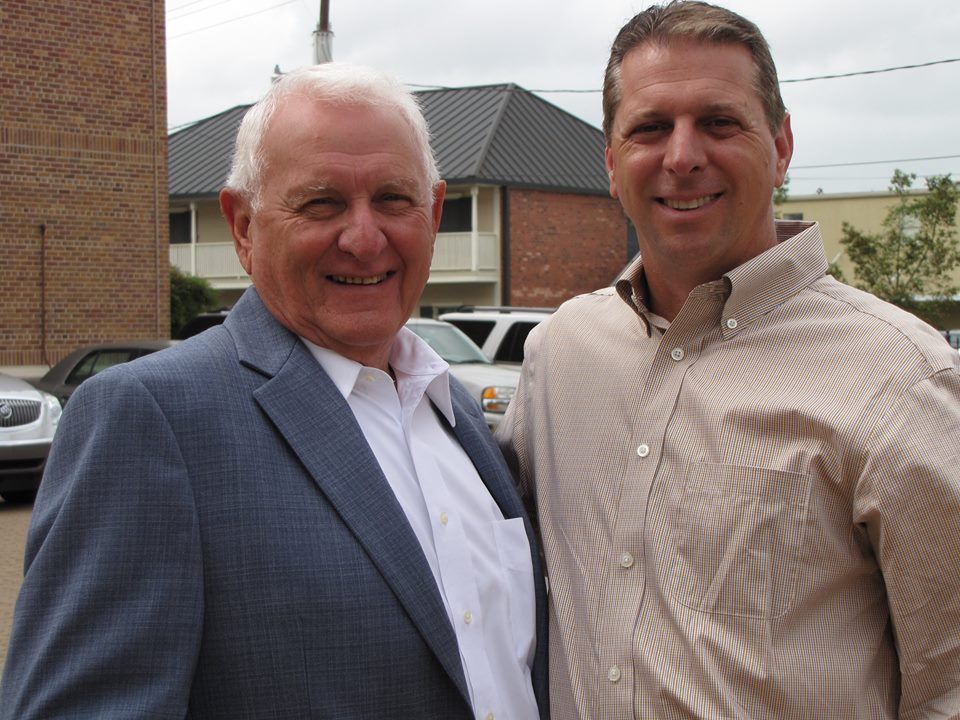
T’bonne businesses consider post-hurricane recovery plan
May 11, 2010Thursday, May 13
May 13, 2010Most people looking at a block of wood see just that – a block of wood.
When Don Meyers looks at it, he sees the grain, the texture, and the potential for a great guitar.
Meyers picked up his first guitar at age 12 and through the years came to appreciate and understand the instrument. But he always felt something was missing. The guitars he played just didn’t have the sound he wanted. So he decided to try his hand at building one himself.
The co-owner of Meyers Custom Guitars admits the first few weren’t up to the standards he set for himself and those never made it out of his home workshop.
Then the Meyers Custom Millenium 2000 came to life. A guitar the Houma builder still won’t sell to this day.
“It was the first one that I had really good expectations on,” he said.
He took the guitar to a National Association of Music Merchants show and found guitar builders as enthusiastic about his creation as he was.
That response and some prodding from good friend (and now partner) Dale Lassegne, got Meyers to quit his job, move out of his workshop, into his own store and begin building guitars full time.
Meyers begins each guitar build by going back to that block of wood. He chooses from several hardwoods, each with different grains, weights, densities, sounds and tones.
“I can take a piece of wood, hang it up, tap it and tell by the sound if it’ll have resonation and good tone transfer. If the wood itself has a musical tone it will make a great guitar,” he said.
The wood comes from the eastern and western seaboards of the U.S., as well as Canada, South America and Africa. Meyers finds suppliers at National Association of Music Merchants trade shows. “All these guys are there with their woods set up. If I see some wood at a show that I like, I have to bring it back home,” he noted.
Meyers uses either mahogany or alder for the guitar bodies. He likes alder because of the fine unblemished grain.
Specialty woods are used to embellish the face or top of the guitars. Figured maple has an intricate grain that takes on an added depth after Meyers stains and finishes it. Flamed maple’s grain patterns create the illusion of fire. Birdseye maple, spalted maple and flamed cedar all have their own traits that add character to the final look of the guitar.
The guitar’s neck can be made from cherry or maple with a fret board of maple or rose wood attached.
“I cut my own fret boards and inlays. After I have all the frets pressed in and clipped, then I start carving the neck,” Meyers said.
The size of a customer’s hands and fingers determine the shape of the neck. It’s important to Meyers that his guitars fit the player.
“When I’m carving a neck I get it to a comfortable feeling then bring the customer in to fine tune it to their hands,” he explained.
The final wood component is the headstock. Meyers has three custom originals, and the surprise is that the style doesn’t have anything to do with the sound. He says the differences are purely for the look of the guitar.
The next step has everything to do with the guitars’ sound. Electronic controls and pickups are fitted into place to complete the package. Pickups are like small amplifiers or microphones that pick up the vibrations of the guitar strings and transfer the sound to the amps and speakers.
Once the guitar is completely assembled, Meyers takes it apart.
“To not do that is a big mistake,” he said. He explained that doing a trial assembly allows him to make adjustments without possibly scratching a completed finish.
With scraps of the same wood used in the guitar construction, Meyers tests dyes to bring out the patterns of the grain. When he finds a combination of dyes that work, he colors the entire instrument. Sealing the wood and reassembling the electronics completes the build.
“From the time that I finish a guitar sometimes it takes me a week just to get it set up. I’ll change settings back and forth until I’m completely satisfied,” he added.
Meyers explained that patience and attention to detail make all the difference in what a guitar will ultimately sound like.
“If you build a hundred guitars a month, you’re going to lose track of something because the machines will get a little off and need recalibration. When you’re cutting hard wood, the machine moves and things come out of alignment,” he said.
According to Meyers, the smallest deviation in wood machining can be a detriment to the sound.
When not building guitars, Meyers also repairs them. “People send me guitars needing everything from electrical to structural repairs to gluing or reshaping,” he said.
South Louisiana humidity can play a role in diminishing the looks of a guitar by softening lacquer and shellac finishes.
“One guy came in with a Rickenbacker he was storing in his garage in Cocodrie. I tried to clean it but had to call him and say ‘sir your finish is like gum.’ The only thing to be done was to strip it,” Meyers explained.
He didn’t strip the wood because it would have degraded the value of the instrument. Meyers can clean a vintage guitar and get it back in working order, but once it’s refinished, it won’t retain the original value.
“A guy came in with a 1949 Gibson he wanted to refinish. I called some antique/vintage people and they told me don’t clean off the yellowed pickup guard. You want it yellowed and smoky because it’s worth a lot more,” he said.
He cleaned the wood and components then called his customer in. “When he came in he fell in love with it and understood why it shouldn’t have been refinished. It’s got character,” Meyers recalled.
Business has been good for Meyers, but he admits the current economy has taken a toll. “Things have kind of slowed down a bit. If it’s a luxury, people can’t afford it, but these guitars are a necessity to professionals. That’s why I’m going to broaden it out a little to Florida,” he said.
Meyers has already sold two guitars there and plans to send about three every couple of months.
“I have my storefront here and my Web site to sell guitars,” he explained. Several stores wanted to sell his guitars but Meyers doesn’t want too many people handling them. “You can’t let just everybody handle a $4,200 guitar.”
Meyers confessed he’s not the only one that can build a guitar that he thinks is exceptional. “Anyone who’s building a custom made guitar the right way will have outstanding, sustained tone quality. When you plug it in and strum it, a real guitar player will say, ‘Wow that’s real guitar sound,'” he said.
Carving and shaping wood into a musical instrument takes about nine weeks. During that time the wood not only takes on the characteristics of a guitar, but a little bit of Meyers himself.
“I come to work in different moods on different days and it all goes into that guitar. It’s all part of the character,” he said.
Don Meyers of Meyers Custom Guitars holds a custom guitar he built for Pop Evil guitarist Tony Greve (who couldn’t take it because of a contractual conflict with the band’s sponsor). “I’ve kind of become attached to it and for now plan to keep it.” Photo by MICHAEL DAVIS












